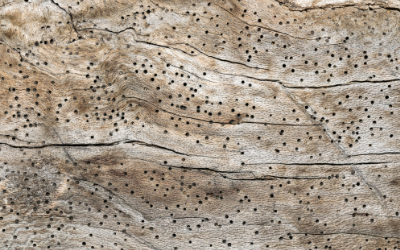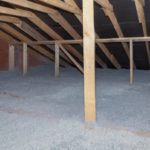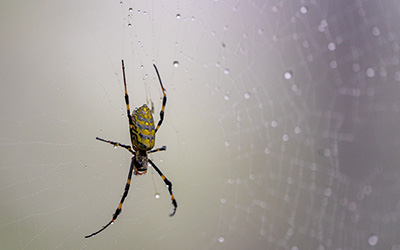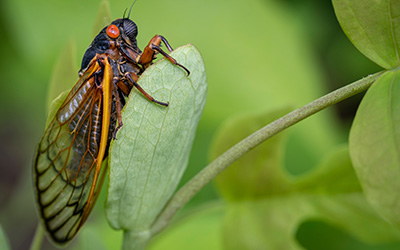
If you’ve ever discovered tiny round holes in wood and wondered what could’ve caused them, you may have encountered termite exit holes! When certain termite species swarm in the spring and summer, they leave their nests and, in doing so, tunnel through wood. The kick-out holes they leave behind are soon thereafter plugged by remaining termites, which is a characteristic that helps set apart termite holes from those left by other wood-destroying insects. While it’s hard to know for sure what type of insect left behind exit holes in wood without the help of an exterminator, there are a few ways you can learn how to identify termite holes.
Do Subterranean Termites Create Exit Holes?
No, only drywood termites leave behind termite holes. Although subterranean termites swarm just like other termites in the spring and summer, they leave their nests in a very different manner. True to their name, subterranean termites build nests underground and travel through mud tubes. These mud tubes also serve the purpose of being their exit from the nest. Seeing holes on a wooden structure, then, is typically indicative of drywood termite activity. This is because drywood termites typically infest wood above ground that is drier. In order to vacate the nest, they must bore through the wood.
Wood Holes from Wood-Destroying Insects
There are many types of wood-destroying insects that are capable of creating tiny, round holes in wood. Needless to say, this makes it difficult to know whether you’re dealing with termites of some other insect. The most common wood-destroying insects include carpenter bees, carpenter ants, powderpost beetles, and bark beetles, among others. All of these insects have unique behaviors and different wood preferences, making it difficult to know which wood-boring insect you’re dealing with. For this reason, it’s best to contact your local pest control experts for help identifying any suspected exit holes. We also have additional articles about termite damage in our termite learning center.
What Does a Termite Kick-Out Hole Look Like?
There are several unique characteristics of exit holes that help differentiate them from holes left by other insects. These include:
- Termite kick-out holes are round and no bigger than ⅛ of an inch.
- After the swarmer termites leave the nest, the termite nymphs within the nest will use a paste made out of frass to plug the holes.
- It is rare to see uncovered termite holes, as the nymphs work quickly after the swarmers depart.
- The kicked-out wood looks like tiny mustard seeds and can appear in a pile.
Identifying Termite Holes in Tennessee
It can be distressing to discover tiny, round holes in any wood structure within or outside your property. In order to identify or rule out termite activity, it’s crucial to enlist the help of a professional pest control expert. Contact the termite exterminators at Leo’s Pest Control today to learn how we can help!
How to Identify Termite Holes in Wood in Bristol TN
Serving Tennessee & Virginia





